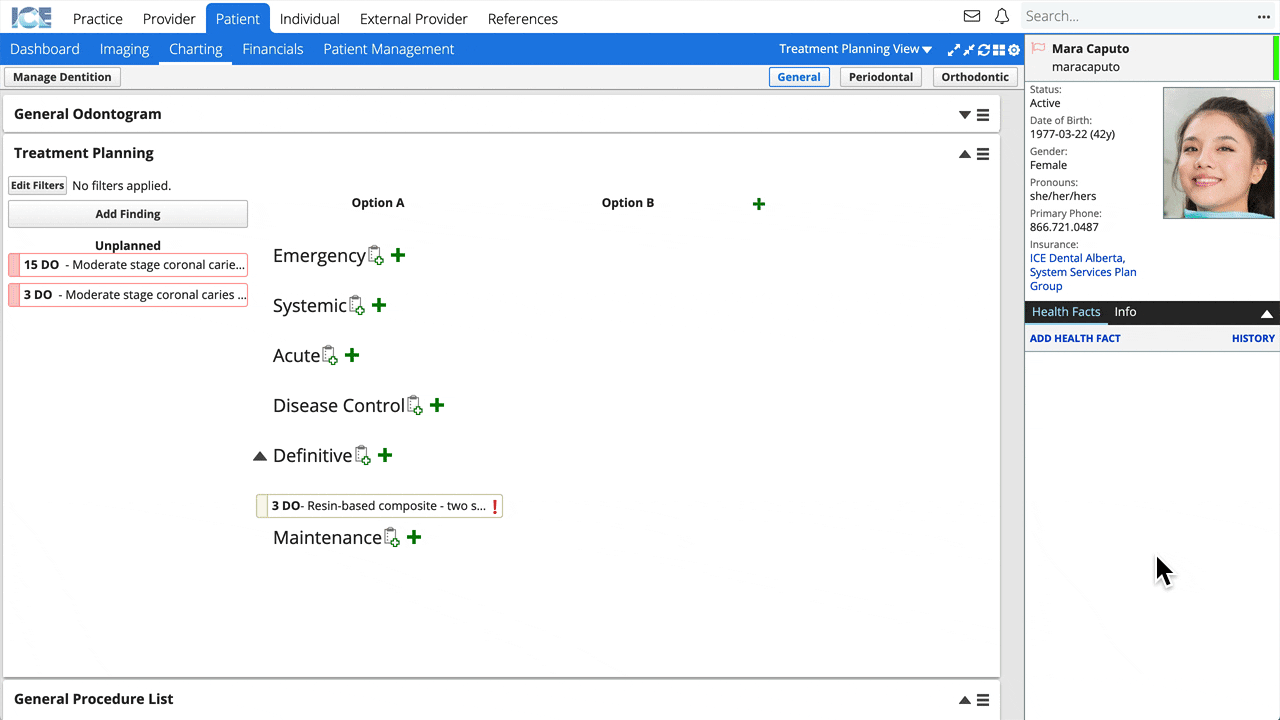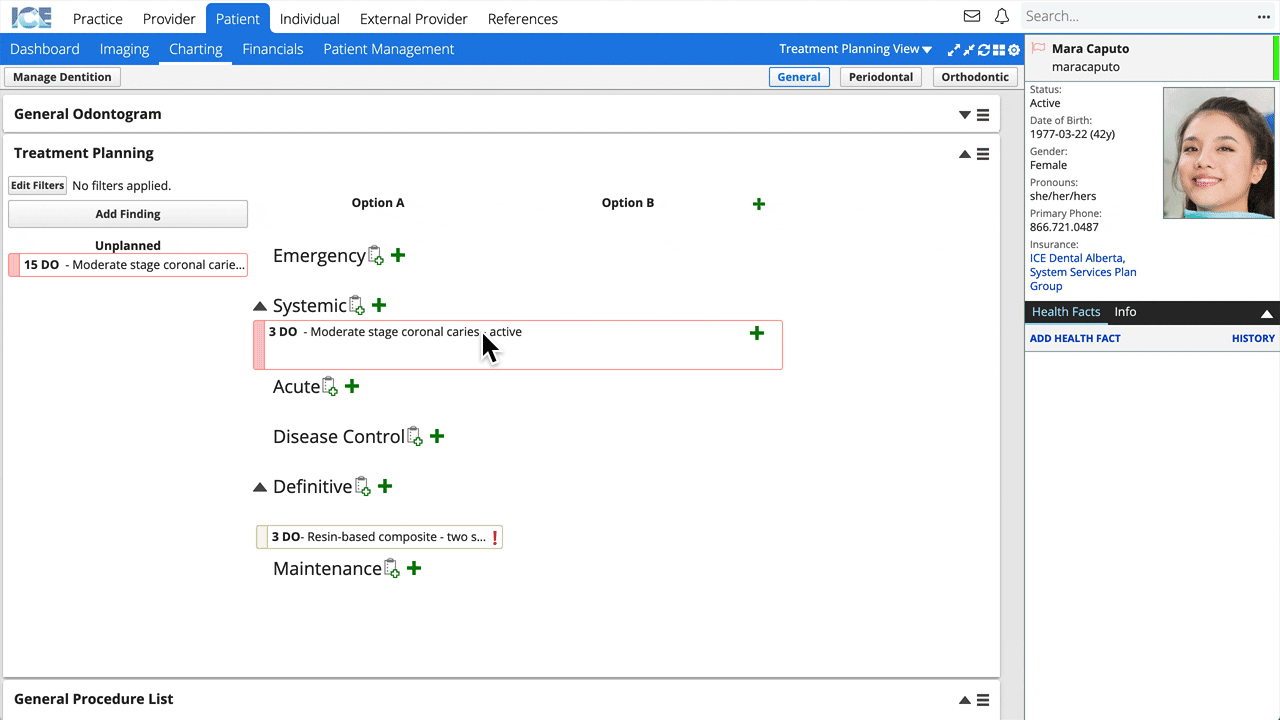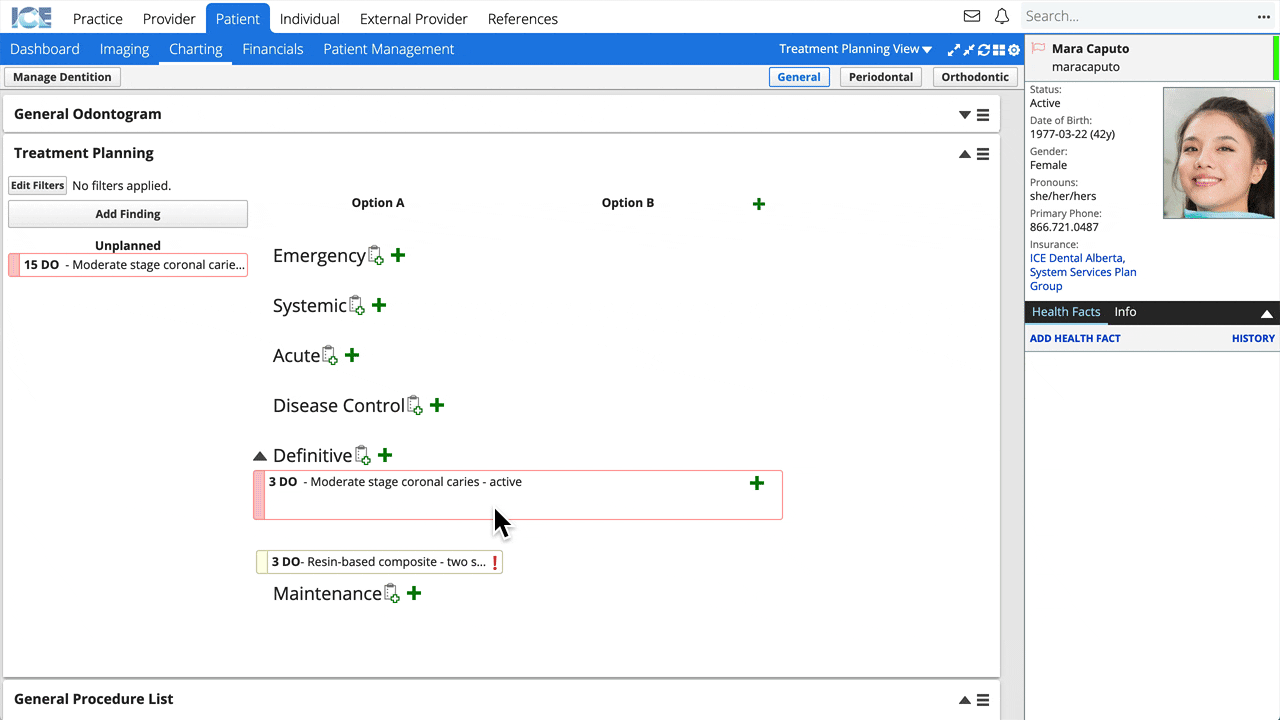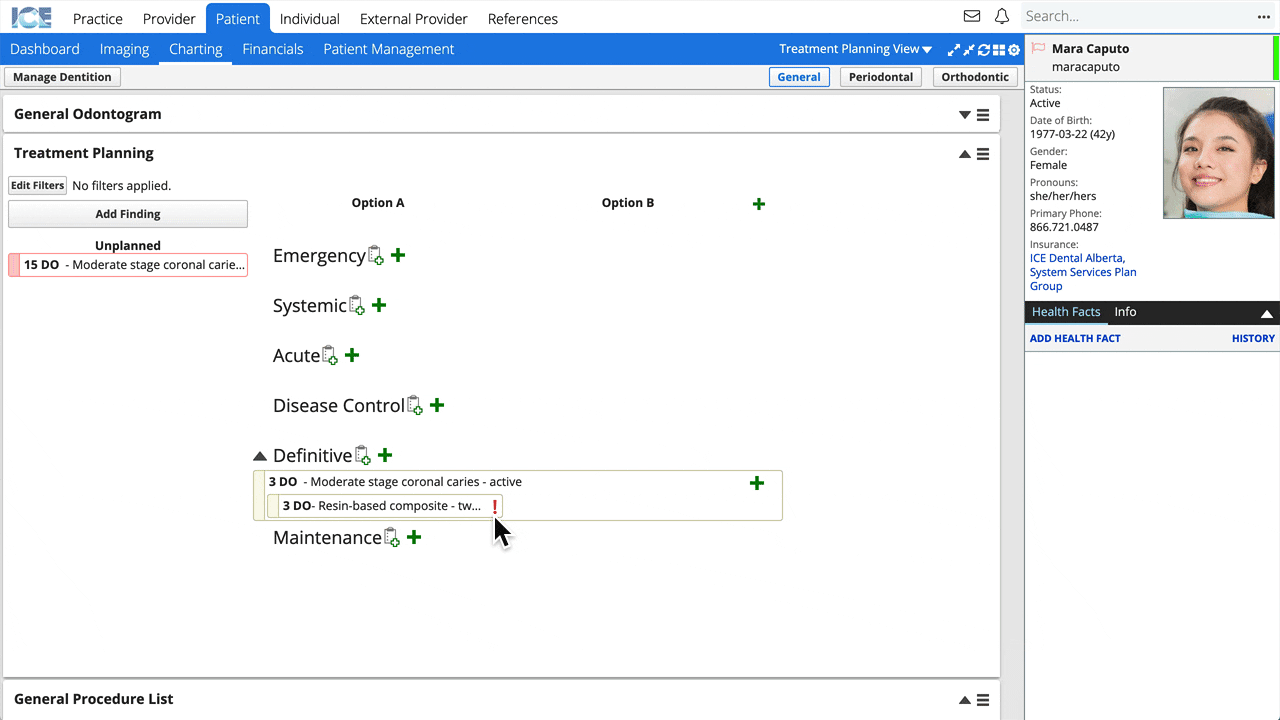Phase a diagnosis or treatment
The treatment plan is organized into different phases. Phases can help you plan the order you treat a patient's diagnoses.
You can move diagnoses or procedures into different phases at any time. They are not rigid categories, but tools for organizing and focusing complex treatment plans.
The phases your practice uses can be configured in Practice Settings, but these are the default phases and their descriptions.
- Emergency: Includes any treatments that are severe and urgent.
- Systemic: Includes findings that fall within evaluation, prevention and medications.
- Acute: Includes finding and treatment procedures aimed at solving severe oral problems.
- Disease: Includes treatment aimed at controlling infections and stopping deterioration.
- Definitive: Includes all active restorative, periodontal, orthodontic therapy, and any other corrective treatment.
- Maintenance: Includes exams, maintenance treatments, and oral hygiene instructions.
Drag and drop is the primary method for moving a diagnosis or procedure into a phase.
- For a diagnosis, you can also pick a phase when you first add it to a patient's record.
- For a procedure, you can also pick a phase based on the location of the
you select when you add the procedure.
You can move diagnoses and procedures to different phases multiple times. Procedures that aren't linked to diagnoses appear as a group at the bottom of each phase.
Phase an unplanned diagnosis
To phase a diagnosis currently in the Unplanned list:
- Drag a diagnosis from the Unplanned list on the left
- Drop it on a phase

Move a diagnosis to a different phase
If a diagnosis or procedure is already in a phase you can:
- Drag and drop it to a new phase

Dragging a diagnosis or procedure to a phase title places it at the bottom of the diagnoses or procedures in that phase.
Procedures in a step set have a dashed line border and move as a group, but you can link them to separate appointments when scheduling treatment.
Link a procedure to a diagnosis
Phasing a procedure can also include connecting a diagnosis to a treatment. Procedures that aren't linked to diagnoses appear as a group at the bottom of each phase.
- Drag a procedure to a phased diagnosis
- Drop the procedure on that diagnosis

- The procedure and diagnosis are now linked
You can also:
- Drag a diagnosis with linked procedures to a different phase. The procedures stay connected.
- Drag a procedure to a different diagnosis to link it to a different diagnosis.
- Drag a procedure to a phase name to unlink it from any diagnosis.
